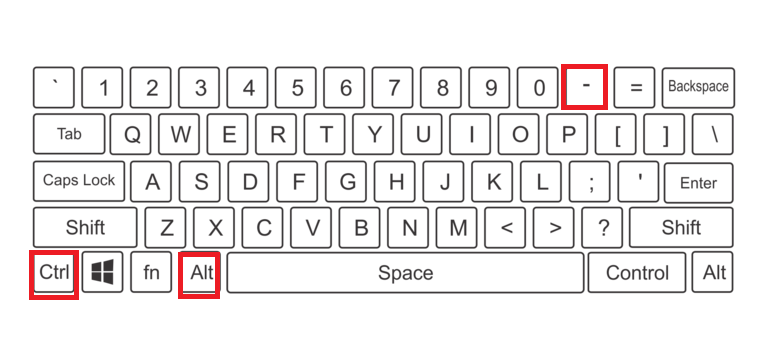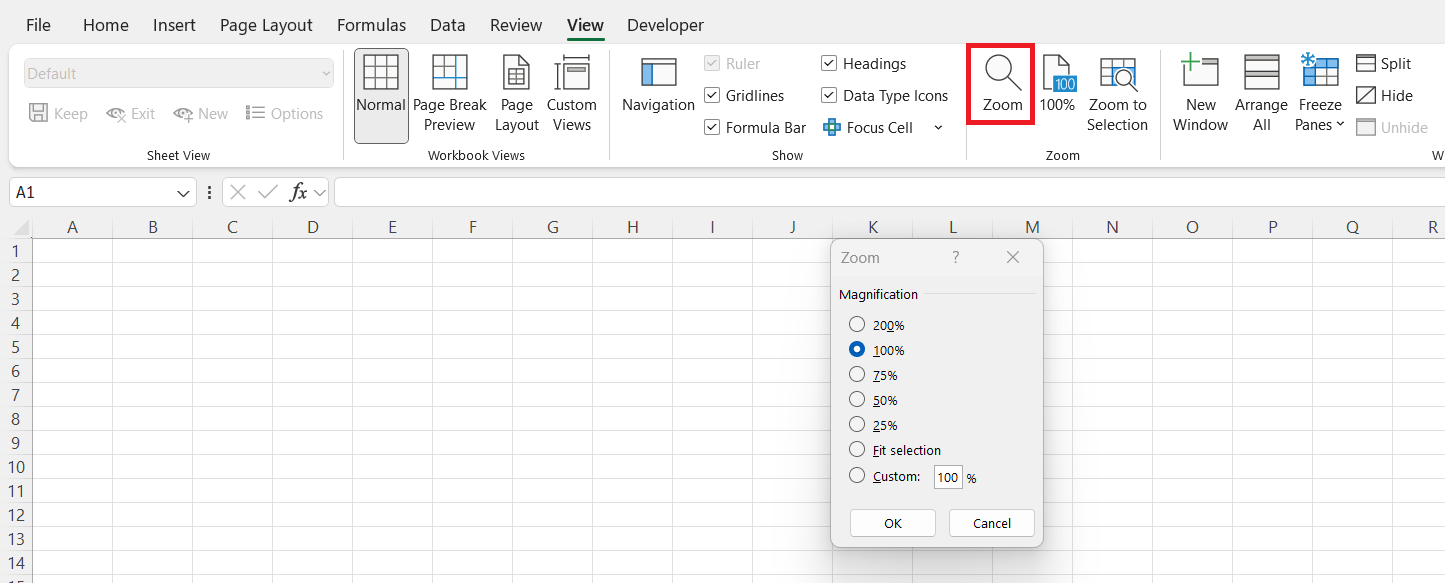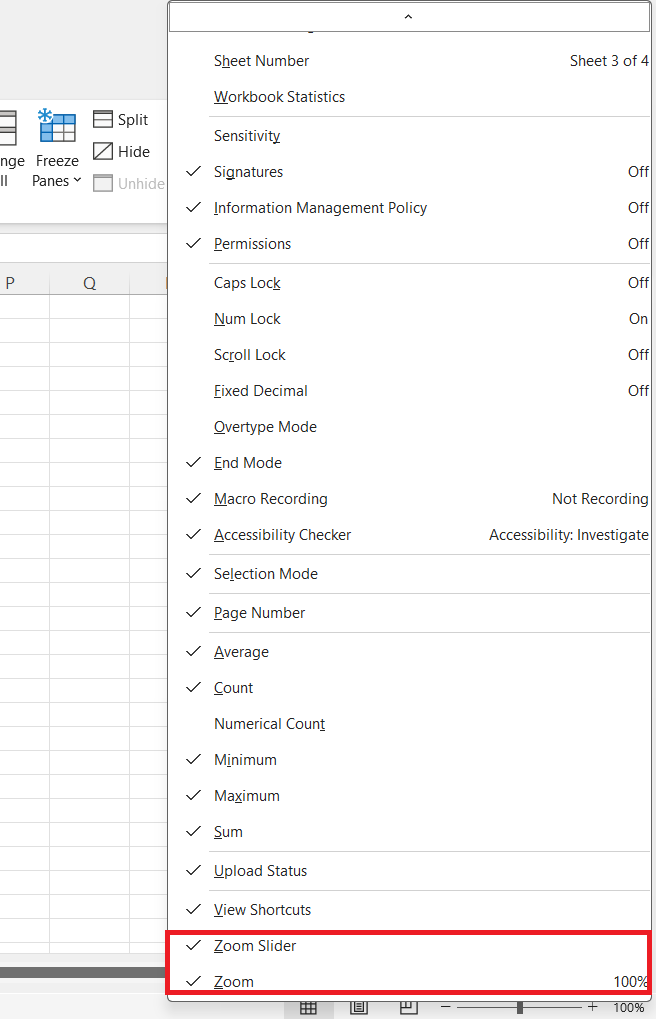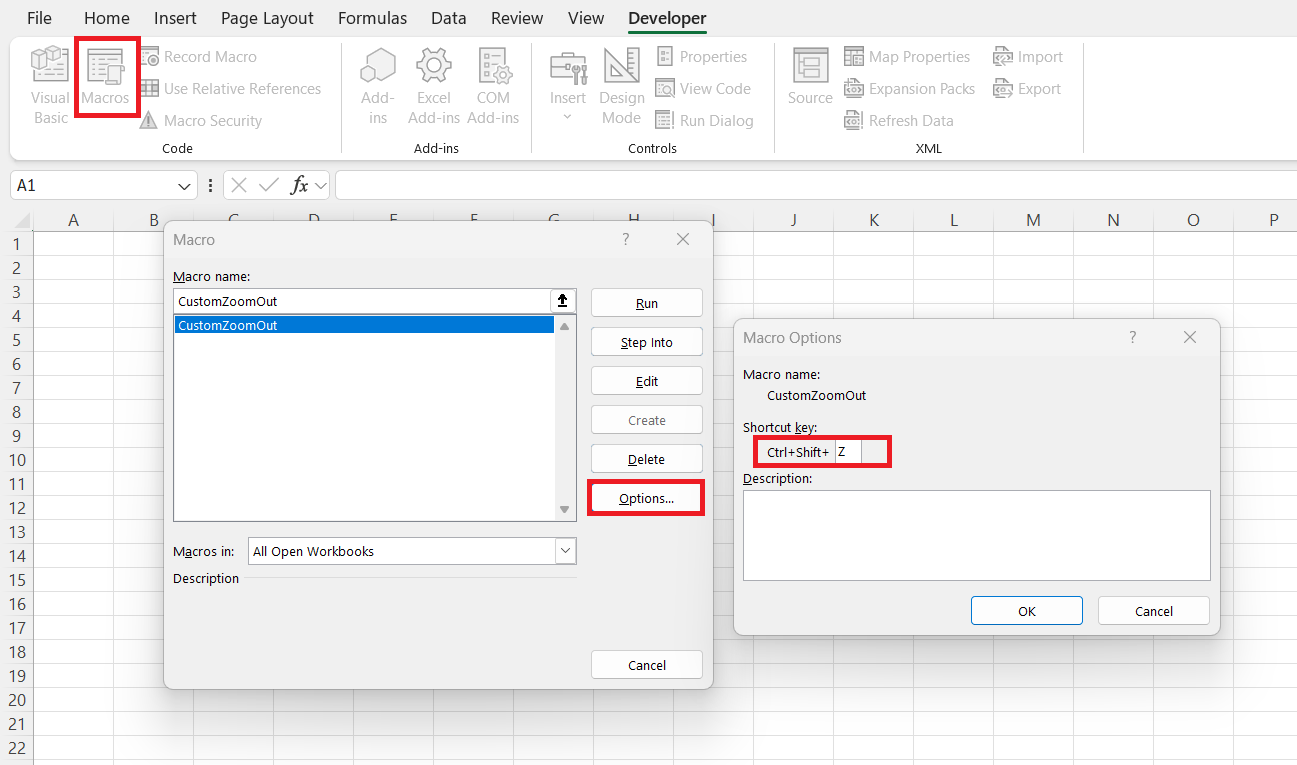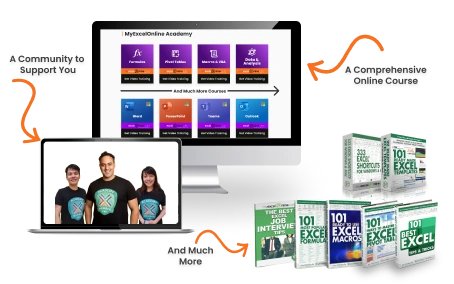Excel, a cornerstone for data manipulation and analysis, occasionally presents challenges in its vast spreadsheets that can seem overwhelming. Zooming out effectively resolves this by allowing users to condense their view of the data, facilitating a broader understanding and smoother navigation through dense information. This guide provides essential techniques and advanced methods on How to Zoom Out, significantly enhancing your Excel experience.
Key Takeaways:
- Zooming out in Excel improves data visibility, making it easier to analyze large datasets.
- It enhances workflow efficiency by reducing scrolling and enabling quick data comparisons.
- Keyboard shortcuts, the Ribbon, and the Status Bar provide easy zoom-out options.
- Advanced users can customize zoom levels with VBA macros for precise control.
- Troubleshooting zoom issues involves resetting default levels and checking for view restrictions.
Table of Contents
Why Zooming Out in Excel is Useful
Enhancing Data Viewability
Zooming out in Excel is instrumental in improving data viewability, especially when dealing with large datasets that exceed the immediate screen area. By zooming out, users can see more rows and columns simultaneously, promoting an overall comprehension of data relationships and trends.
This panoramic view is particularly beneficial in financial analysis and project tracking, where understanding the whole picture is crucial. Enhanced viewability also assists in identifying formatting inconsistencies and verifying the structural integrity of complex formulas across the worksheet.
Streamlining Workflow Efficiency
Streamlining workflow efficiency is another significant benefit of zooming out in Excel. By reducing the need to scroll constantly, users can locate information faster, thus saving time and effort. This efficiency extends to editing, as users can make bulk changes to multiple sections without losing their place.
Additionally, tasks like aligning columns and comparing data across different sheets are simplified, reducing the likelihood of errors and enhancing productivity. For teams collaborating on a workbook, a zoomed-out view sometimes provides context that may otherwise be missed, supporting better decision-making and workflow synergism.
Quick Methods on How to Zoom Out
Using Keyboard Shortcuts
For those who prefer speed and simplicity, using keyboard shortcuts to zoom out in Excel can be an effective method. By pressing Control + Alt + Minus Key, you can decrease the zoom level by 15% with each press. This method offers a quick, hassle-free way to adjust the view without interrupting your workflow with mouse clicks.
The shortcut is particularly advantageous when working on a numeric keypad, allowing for rapid view adjustments. To zoom out more significantly, you can repeat the key combination until the desired zoom level is reached. This efficiency can be a game-changer in high-paced environments where time is of the essence.
Navigating the Ribbon for Zoom Options
Navigating the Ribbon for zoom options in Excel is a straightforward and visual approach to adjusting your worksheet view. To begin, click on the “View” tab located at the top of the Excel window.
Within this tab, you’ll find the “Zoom” group, which offers several options: the Zoom button allows you to open a dialog box to specify a custom zoom level.
The 100% button quickly resets the zoom back to the default level, and the Zoom to Selection button adjusts the zoom based on the range of cells currently selected, ensuring everything fits on the screen.
These features provide flexibility to tailor your view effortlessly, catering to both general adjustments and precise needs within your Excel tasks.
Utilizing the Status Bar for Quick Access
The Status Bar in Excel offers an efficient, user-friendly way to quickly zoom out without navigating away from your work. Located at the bottom right of the Excel window, the Zoom Slider provides an intuitive control: slide it to the left to zoom out or to the right to zoom in.
This feature offers instantaneous access to view adjustments that can be made on the fly. Additionally, clicking on the zoom percentage value displayed next to the slider opens a dialog box, allowing you to choose a predefined zoom level or enter a custom percentage.
If the slider or percentage value isn’t visible, a right-click on the Status Bar will present options to enable these features.
This method is ideal for making rapid adjustments in response to various data display needs.
Advanced Zoom Out Techniques
Customizing Zoom with VBA Macros
For advanced users looking to precisely control the Zoom functionality in Excel, customizing Zoom with VBA macros offers a powerful solution. By writing macros, you can set specific zoom increments that aren’t available through standard Excel controls. To begin, access the VBA editor by pressing Alt + F11. You can then insert a new module and paste a macro script to adjust the zoom levels, such as:
Sub CustomZoomOut() Dim Increment As Integer Increment = 5 ' Set your desired decrement value On Error GoTo MaxZoomReached ActiveWindow.Zoom = ActiveWindow.Zoom - Increment Exit Sub MaxZoomReached: MsgBox "Cannot zoom out any further", vbExclamation End Sub
Once the macro is added, it can be assigned to a shortcut key for easy use.
This technique allows for precise control over zoom levels beyond the default settings, enabling users to tailor the viewing experience to specific requirements. It’s especially beneficial for those who frequently switch between detailed and overview perspectives in large, complex spreadsheets.
Zooming with a Scroll Wheel
Zooming in Excel using a scroll wheel is a quick and intuitive method that doesn’t require leaving the worksheet. To utilize this feature, simply press and hold the Ctrl key on your keyboard. While holding this key, scroll the wheel up to zoom in and down to zoom out, adjusting the view in increments of 15%.
This method provides seamless control over your worksheet view, making it particularly useful for rapidly shifting between detailed and broad overviews. It allows for continuous adjustment without manual input of zoom percentages, giving you dynamic control over data presentation. This approach is especially handy during presentations or fast-paced analysis sessions, where fluid navigation is required.
Troubleshooting Common Zoom Out Issues
Resetting Default Zoom Levels
Resetting default zoom levels in Excel is essential when you need to revert the view back to the standard 100% after numerous adjustments. This can be done in several straightforward ways. Firstly, in the “View” tab on the ribbon, clicking the 100% option swiftly restores the default view.
Alternatively, the Status Bar contains a percentage button that, when clicked, also allows you to set the zoom back to 100%.
If you prefer a keyboard shortcut, simply press Alt + W + J to instantly return to the default zoom level. These methods ensure a quick reset, maintaining consistency in your worksheet view, and are particularly useful after examining large data sets or making multiple zoom alterations for detailed scrutiny.
FAQs
How do you zoom out in Excel?
To zoom out in Excel, use the zoom slider located in the bottom right corner of the window. Simply drag the slider to the left to decrease the zoom level. Alternatively, you can click on the “View” tab in the ribbon and select the “Zoom” button to choose a specific zoom percentage or decrease the view using keyboard shortcuts like Control + Alt + Minus Key.
How do I change the default zoom level in Excel?
To change the default zoom level in Excel, you can’t set a permanent default directly. However, you can adjust the zoom on each workbook or worksheet before saving. Simply navigate to the “View” tab, select the “Zoom” button, set your desired zoom level, and then save the workbook. Each time you open it, Excel will retain the last saved zoom level.
Can I set a custom zoom percentage for my worksheet?
Yes, you can set a custom zoom percentage for your Excel worksheet. Click on the “View” tab and then the “Zoom” button to open the Zoom dialog box. From there, select “Custom” and enter your desired percentage to apply. This allows you to tailor the view precisely to your needs.
What should I do if my Zoom options are greyed out?
If your zoom options are greyed out in Excel, first ensure the worksheet isn’t protected, as protection can limit some functionalities. Go to “Review” > “Unprotect Sheet” if necessary. Check if you’re in “Page Break Preview” or “Page Layout View,” which sometimes restricts zoom options. Switching back to “Normal View” via the “View” tab can resolve this.
How do I adjust the view in Excel?
To adjust the view in Excel, use the “View” tab where you can switch between different worksheet views like Normal, Page Break Preview, and Page Layout. You can also utilize the zoom slider on the status bar to change the zoom level or access the “Zoom” options in the View tab for specific settings. These tools allow you to tailor the worksheet to your preferences.
John Michaloudis is a former accountant and finance analyst at General Electric, a Microsoft MVP since 2020, an Amazon #1 bestselling author of 4 Microsoft Excel books and teacher of Microsoft Excel & Office over at his flagship MyExcelOnline Academy Online Course.

